Words by Coach Carson McQuarrie
The knowledge around strength training for endurance athletes has become more widespread and accepted to be beneficial for a number of physiological adaptations. The obvious adaptation endurance athletes seek is to become stronger, in addition, they now know it’s good to become more functional specific to their sport. Does that leave the athlete, to do the exact same monotonous movements throughout their entire strength training program? It doesn’t have to be that way. In this article, I want to educate cyclists on the purpose of strength training, what a strength workout consists of, and how to make the pre-season winter program grow with your ability level.
The Purpose of Increasing Power and Functionality
When we speak of power we’re talking about the amount of force that can be generated by the body using Type 2 Energy systems which typically lasts up to 1 minute. I cover more about that in this article on Cycling Power Zones and Adaptations. The more specific the weight training can be to the Type 2 energy systems then greater the increase in power the cyclist will gain. This is why cyclists experience better improvements from focusing on heavyweights, low reps, and more sets. Some of the anaerobic endurance (zone 6) and neuromuscular power (zone 7) benefits that ensue are:
- Conversion of Type 2b to more fatigue resistant Type 2a muscle fibers.
- Increase in peak neuromuscular power (5-20 seconds).
- Delayed activation of Type 2b muscle fibers.
- Improved musculotendinous stiffness.
- Increase in lower body lean mass.
Essentially, the more weight you can lift in 5 – 20 seconds ( 3-8 reps) the more power you’ll be able to apply through the pedals, cranks, and faster your sprint will be. The more sets you can do of that same weight in the gym the more fatigue resistance you’ll have and longer you’ll be able to sustain the sprint and/or the more times you’ll be able to repeat that power on the bike. This is true for elite men and women, and untrained and masters cyclists. Strength training in this rep range with concurrent endurance training has shown to also have improvements in zone 5 (3-8 minutes), zone 4/threshold (10-60 minutes), and longer durations of lower intensity aerobic zones such as:
- Pedaling efficiency.
- Submaximal aerobic economy.
- Maximal aerobic economy.
When we speak of being more functional we’re talking about being able to perform the movements of cycling while our muscles are under stress. You may think that cycling on its own is the best way to improve cycling-related capabilities however cycling alone can cause imbalances and injuries. Performing cycling-related movements off the bike and under stress can:
- Support range of motion.
- Focus on specific smaller and larger muscles.
- Increase overall body stamina and cycling economy.
- Build neuromuscular motor skills and coordination.
Let’s now look at what a strength program consists of and how to make it grow with you.
The 4 Components of a Strength Workout for Cyclists
Strength Training on its own can induce positive effects however it can carry negative ones as well, much as only cycling can do. Some of the negative effects of strength training are shortness of muscle fibers which reduce flexibility/mobility, and only doing certain exercises such as squats or deadlifts don’t emphasis stability and coordination necessary for cornering, climbing, and maintaining overall strength and endurance on the bike. The 4 components of a strength training workout follow the sequence of warm-up, power, stability and coordination, and cool-down to target specific muscles so each is taxed in a way that induces an intended adaptation and injury prevention.
To prevent some of the negative effects of doing a limited number of exercises a single strength training workout is best when comprised of the following components in the following sequence:
Warm-Up
A warm-up should aim to complete a few functions such as:
- Increased blood flow and oxygenation of the muscles to prepare muscles for greater stress.
- Strengthen neural pathways by replicating movements relevant to cycling.
- Lightly increase range of motion by dynamically stretching muscles to prevent tightness of muscles and injury.
Power
A strength training session can have different emphasizes at different phases throughout the year. In the pre-season, weight training is majorly used to build a preemptive need of power for racing later in the year. This is best done with the following two incorporations:
- Utilizes multi-joint movements that replicate, as best possible, the characteristics of cycling.
- Periodization that builds to greater weights and sets while reducing the number of reps. 3 sets of 8 reps @ 8RM (rep max) building to 5 sets of 4 reps @ 4RM.
Stability and Coordination
Stability and coordination when done last focuses on the smaller muscle fibers once the larger muscle fibers have been taxed to exhaustion. Exercising these smaller muscle fibers, with less support from larger fibers, allows for greater control of movements relevant to cycling when they aren’t taxed. Core exercises are often a large aspect of stability and coordination which may be performed as individual sets or as a circuit.
Cool-Down
At the end of a strength workout, you’re likely feeling energized and stronger however despite those dynamic warm-up exercises at the beginning you’re likely feeling tight and your range of motion has decreased. A cool-down serves much the same purpose as a warm-up:
- Increase blood flow.
- Increase range of motion.
- Prevent injury.
A common practice involves a second period of light cardio-respiratory activity at the end. Even though there’s controversy on when to perform static stretching or whether or not it’s even beneficial personal experience has taught me that it’s one of the best ways to dramatically increase range of motion and prevent injury when done after muscles are adequately warmed-up. In addition, foam and ball rolling can be another method to get a deep and/or targeted stretch on a muscle.
Example Exercises and How-To Make them Grow with You
Two important aspects of first choosing exercises to be a part of the 3 components are:
- Finding exercises you can complete with proper form.
- Choosing ones that best replicate the movements of cycling.
The key aspects involved in the movements of pedaling and riding a bike come from it being a sport that:
- The primary muscle group is the legs, predominantly the quads.
- The legs activate in a singular fashion and move in a bidirectional movement, forward-backward and up-down.
- Primarily uses the anterior (front) muscle groups of the body, except for the neck, triceps, calf muscles, and hamstring).
Let’s look at some exercises that could be used to make a Pre-Season Strength Program, and how to make the progression of these exercises grow with your ability level from beginner-intermediate-advanced.
Beginner
Warm-Up:
Always start with 10 – 20 minutes of light cardio such as cycling.
- Box Step-Up.
- Walking Deadlift.
- Figure 4 Hip Rotation.
Power:
- Machine Barbell Back Squat. Eg. 3 sets of 8 reps @ 8RM.
- Leg Press. Eg. 3 sets of 8 reps @ 8RM.
- Hamstring Curl. Eg. 3 sets of 8 reps @ 8RM.
Stability and Coordination
- Hanging Single Leg Lift.
- Bicycle Crunch.
- Plank.
Cool-Down
Perform 10 minutes of light cardio-respiratory activity.
- Standing Quad Stretch
- Downward facing dog calf stretch
- Standing Hamstring Stretch
After finding exercises you’re able to complete the next step of progression is choosing ones that better mimic the movements of cycling (if you’re able to complete with proper form) and/or apply progressive overload to make the movement more difficult. Let’s look at what this may look like:
Intermediate
Warm-Up
- Higher Box Step Up w/ Light Weights.
- Hip Opener Lunge.
- Single-Leg Side Swings on Bosu Ball.
Power:
- Barbell Back Squat (increase weights, decrease reps, increase sets). Eg. 4 sets of 6 reps @ 6RM.
- Single-Leg Press (increase weights, decrease reps, increase sets). Eg. 4 sets of 6 reps @ 6RM.
- Single-Leg Hamstring Curl. Eg. 4 sets of 6 reps @ 6RM.
Stability and Coordination:
- Hands-on Swiss Ball Plank w/ Alternating Knee Raise.
- Bicycle Crunch on Bosu Ball.
- Swiss Ball Plank w/ feet on the ball.
Cool-Down
Perform 10-20 minutes of light cardio-respiratory activity.
- Twisted Half Lizard
- Wall Assisted Calf Stretch
- Floor-Seated Hamstring Stretch
Advanced
Warm-Up:
Perform 10-20 minutes of light cardio-respiratory activity.
- Raised Bosu Ball Step-Up w/ Weights.
- Hip Opener Lunge w/ Bosu Ball and/or light weights.
- Lateral Hip Shift & Twist
Power:
- Barbell Back Squat (increase weights, decrease reps, increase sets). Eg. 5 sets of 4 reps @ 4M.
- Dumbell Weighted Lunge (increase weights, decrease reps, increase sets). Eg. 5 sets of 4 reps @ 4M.
- Single-Leg Hamstring Curl (increase weights, decrease reps, increase sets). Eg. 5 sets of 4 reps @ 4M.
Stability and Coordination:
- Hand-on Swiss Ball Plank w/ Ankle-weight Alternating Knee Raise.
- Bicycle Leg Extension w/ Medicine Ball Rotation.
- Feet-on Swiss Ball Plank to Knee-tuck.
Cool-Down
Perform 10 minutes of light cardio-respiratory activity.
- Half-Reclining Lizard
- Ledge Standing Calf Stretch
- Floor-Seated Single-Leg Assisted Hamstring Stretch
It’s December which is a great time to start your weight training regime. You are equipped with the know-how and not only how to build a pre-season strength training plan of your own but how to make the exercises match your ability and grow with you. There are many more examples of different exercises. To support your individual needs consider working with a physical therapist or a cycling-specific coach. Coaches and other professionals are there for your education, guidance, and long-term support.
Coach Carson is a dedicated athlete and coach who specializes in ultra-distance cycling and plant-based nutrition. For more information on Carson’s coaching services, or to schedule a coaching consultation with him click HERE.
Citations:
- https://www.youtube.com/watch?v=kqwYSIPGiH8
- https://www.youtube.com/watch?v=z3ShwLQIQ0I
- https://www.pinkbike.com/news/how-to-release-tight-quads-and-increase-your-power-abi-yoga-2016.html
- https://www.amazon.com.au/Cycling-Science-Sport-Stephen-Cheung-ebook/dp/B071FRS2P1
- https://www.nsca.com/contentassets/116c55d64e1343d2b264e05aaf158a91/basics_of_strength_and_conditioning_manual.pdf
- https://onlinelibrary.wiley.com/doi/abs/10.1111/sms.12257
- https://pubmed.ncbi.nlm.nih.gov/23914932-optimizing-strength-training-for-running-and-cycling-endurance-performance-a-review/?from_term=strength+training+for+cycling&from_pos=1
- https://pubmed.ncbi.nlm.nih.gov/28292885-heavy-strength-training-improves-running-and-cycling-performance-following-prolonged-submaximal-work-in-well-trained-female-athletes/?from_term=strength+training+for+cycling&from_pos=4
- https://pubmed.ncbi.nlm.nih.gov/28459360-strength-training-for-middle-and-long-distance-performance-a-meta-analysis/?from_term=strength+training+for+cycling&from_pos=5
- https://pubmed.ncbi.nlm.nih.gov/27618339-the-effect-of-maximal-and-explosive-strength-training-on-performance-indicators-in-cyclists/?from_term=strength+training+for+cycling&from_page=2&from_pos=2
- https://pubmed.ncbi.nlm.nih.gov/21638070-strength-training-improves-cycling-efficiency-in-master-endurance-athletes/?from_term=strength+training+for+cycling&from_page=6&from_pos=7
- https://pubmed.ncbi.nlm.nih.gov/16015143-maximal-leg-strength-training-improves-cycling-economy-in-previously-untrained-men/?from_term=strength+training+for+cycling&from_page=8&from_pos=6
- https://pubmed.ncbi.nlm.nih.gov/16015143-maximal-leg-strength-training-improves-cycling-economy-in-previously-untrained-men/?from_term=strength+training+for+cycling&from_page=8&from_pos=6
- https://pubmed.ncbi.nlm.nih.gov/27618339-the-effect-of-maximal-and-explosive-strength-training-on-performance-indicators-in-cyclists/?from_term=strength+training+for+cycling&from_page=2&from_pos=2
- https://pubmed.ncbi.nlm.nih.gov/23914932-optimizing-strength-training-for-running-and-cycling-endurance-performance-a-review/?from_term=strength+training+for+cycling&from_pos=1
- https://pubmed.ncbi.nlm.nih.gov/25892654-strength-training-improves-cycling-performance-fractional-utilization-of-vo2max-and-cycling-economy-in-female-cyclists/




1 Comment. Leave new
Nicely done! Also corrective exercise is critical this time of year to address muscle imbalances, under active and overactive muscles. Another great resource is your local personal trainer!